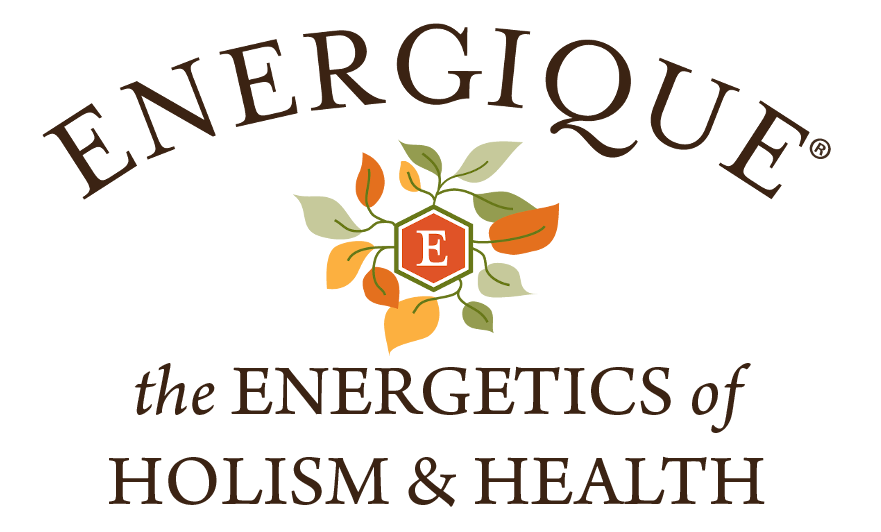Ever since Ozempic was approved to treat type 2 diabetes, the “weight loss shot” and various other GLP-1 agonists have superseded most other weight loss strategies, despite their dangerous side effects and untoward cosmetic effects. Even in alternative health spaces, discussions are dominated by the search for “natural” GLP-1 agonists or targeted nutrition to support individuals currently starving on these shots. Some are beginning to question if a natural approach to weight loss is even preferable, given that it often fails to achieve the dramatic results of Ozempic. Taking the pharmaceutical option, even against one’s better instincts, seems to be most appealing when people feel helpless to lose weight on their own due to some limiting external factor, with aging being a very common one. It certainly becomes at least somewhat harder to resist weight gain and lose existing weight at older ages, but for those who remain wary of Ozempic, there are still many more natural ways to address this.
First, it must be understood that while weight gain is undeniably a common part of aging, this does not necessarily imply that it is a natural part of aging. Because disease has become so prevalent in modern society, we often tend to confuse what is common with what is truly natural. The fact that it has become common for children today to have chronic diseases should not lead anyone to believe that this is natural, and the same applies to many of the assumed inevitable effects of aging. If one views the phenomenon of aging through an objective lens, taking into account medical facts and the experiences of cultures other than our own, it becomes obvious that functioning does decline naturally with age, but usually not to anything like the extent we see in our own culture.
Sports records provide some interesting data to help quantify physical decline with age, helping to distinguish what is probable from what is possible, and what may be avoidable from what is inevitable. As someone who runs marathons, I found it interesting to examine the data on world-record marathon times by age group. The fastest marathon on record was run by Kenya’s Eliud Kipchoge in 2018, in a spectacular 2 hours, 1 minute, and 39 seconds. He was 33 years old at the time, and indeed all of the fastest age record times were run by people between the ages of 25 and 37. Because these world records represent the approximate limits of human potential, it is interesting to observe to what extent age affects the human potential. Marathon records exist for boys as young as 4 and men as old as 90, and the trends one observes are such:
- one’s potential increases dramatically between the ages of 4 and 18, probably as legs grow longer and muscles develop.
- very slight improvements are made consistently between ages 18 and 25. This may reflect additional years of training experience more so than increasing physical capacity.
- times hold relatively stable between ages 25 and 37. It is notable that the 37 year old men’s world record is faster than any of the records set by men in their 20s.
- human physical potential decreases slowly but relentlessly between ages 37 and 76, to the degree of about 1.5 minutes per year, and more rapidly at ages beyond. This is significant and proves that even very healthy people, elite marathon runners, lose their capacity to do things with age. But it also shows that they don’t lose very much of it: the world record holder for the 76 year old age group, Ed Whitlock, ran a marathon in 3 hours, 4 minutes, and 53 seconds. To put this in perspective, that was faster than my personal best finishing time set at age 25, and indeed would place 76 year old Ed Whitlock in the 97th percentile of marathon finishers in the 20-29 year old age group! He set another world record at age 80, finishing only 11 minutes slower, and posted his last world record at age 85, finishing in a time that would place him near the middle of the pack in most marathons.
We all certainly slow down with age, but a marathon is among the most grueling and physically demanding athletic events. If an eighty year old has run a marathon faster than I could at 25, to what extent can age truly be used as an excuse for one’s inability to lose weight? One might not be able to lose weight as quickly or easily as one might have at 25, but it can still be done. The notions that weight gain is inevitable with aging, that it becomes substantially more difficult, even impossible to lose weight as one ages without pharmaceutical assistance like Ozempic, are self-limiting beliefs that do not fully bear out in truth. It is, undeniably, more difficult to resist gaining weight as one ages, but it is not impossible. If conventional efforts to do so are failing, it may simply require a different set of strategies.
It is believed the most significant cause of age-related weight gain is declining muscle mass. Even at rest, muscle is a very energy-demanding tissue, and one’s metabolic rate is more or less determined by one’s degree of muscle mass. People lose muscle mass with age for two primary reasons, decreasing physical activity and declining sex hormone levels (which applies to both sexes). As muscle mass is lost, resting metabolism decreases, and the same dietary intake will result in progressively increased weight gain. The problem is this often leads to dieting, which can worsen the situation by leading to trace mineral deficiencies. These become increasingly more common with age, due to both having endured a lifetime of stressors which tend to deplete them, and the fact that nutrient absorption itself tends to decline with age. Older individuals are at increased risk for nutrient deficiencies even on an identical diet, so further restricting food intake in an effort to lose weight is almost the last thing one should be doing.
Specifically, research has shown that zinc, selenium, and manganese levels significantly decline with age1. Research also shows that deficiencies in any of these trace minerals is associated with increased body fat, regardless of age: overweight or obese individuals are consistently found to have lower levels of manganese2, selenium3, and zinc4. Another trace mineral that is closely associated with body weight, and specifically blood sugar and diabetes risk, is chromium. The depletion of chromium in the body is closely associated with stress and cortisol levels, and if chromium isn’t being supplied adequately in the diet, every stressful event experienced over the years will progressively deplete it. Chromium is required to maintain adequate insulin secretion and healthy blood sugar levels, and because cortisol raises blood sugar, chronically elevated cortisol will strain this system in a way similar to eating a diet high in sugar. This applies to both natural cortisol secreted under stress and pharmaceutical forms of cortisol like prednisone. The relatively common phenomenon of stubborn weight gain following a bout of corticosteroid treatment, resisting all efforts to lose, likely involves a drug-induced chromium deficiency, as cortisol in any form will increase blood sugar, increase the need for insulin, and increase daily chromium losses through the urine. A diet rich in trace minerals, possibly with trace mineral supplementation and digestive enzymes to enhance absorption, is an important strategy to address age-related weight gain, especially in light of the facts that restrictive diets and strenuous exercise tend to further deplete these nutrients.
While trace minerals are essential to support a healthy metabolism, they are unlikely to address the problem of declining muscle mass. Although resistance training is one of the best ways to increase muscle mass, improve metabolism, and promote overall longevity, alone it may not be enough because there are other factors associated with aging that adversely affect body composition. The two primary ones are testosterone and estrogen, which tend to decline with age and play a critical role in determining how much fat the body stores. Addressing age-related declines in testosterone and estrogen should be considered fully as important for supporting a healthy body weight as it is for supporting sexual health.

When it comes to male physiology, testosterone is a veritable magic potion that will effortlessly transform fat into muscle, even without exercise. Studies of men with clinical hypogonadism show that administering testosterone to achieve even average serum levels will cause an increase in muscle and decrease in body fat, in the absence of exercise and dietary modification. Not only does this explain why it may be easier for men to lose weight, it explains why it is often more difficult for older men to lose weight. Any strategy to support weight loss in aging men should address testosterone levels, and one of the most effective and underrated ways to boost testosterone, especially within the context of aging, is vitamin E. While vitamin E lacks the bravado of numerous other male-enhancing supplements, it more than makes up for this in terms of having actual evidence. Not only does vitamin E selectively concentrate in the testes, highlighting its importance there, it has been shown to both increase testosterone secretion5 and protect against testicular damage6, which is the likely culprit of age-related testosterone decline.
Speaking of testicular damage, it is a topic of intense debate to what extent “andropause” is real, and whether it is natural for a man to experience a significant decline in testosterone with age. It is well-documented that there are men into their 60s with higher testosterone levels than the average young man today. The noted average decline of 1% per year, starting age 35, may not be truly natural but the result of accumulated damage to the testes wrought by unnatural lifestyle factors. Our modern diet, for example, tends to be high in polyunsaturated fats (PUFAs) from processed seed oils and low in saturated fat compared to what our pre-modern ancestors ate, and this way of eating will wreak havoc on testosterone, even in young men. A study of male weightlifters in their twenties found that eating saturated fat acutely increases testosterone and eating PUFAs decreases it7, likely because these fats deplete vitamin E and contribute to higher levels of inflammation. If even young men are suffering this effect, anyone hoping to maintain testosterone into old age should look to replacing all of the PUFA-rich processed oils in his diet and increasing saturated fats.
For women, testosterone levels often increase slightly during menopause, but far more impactful on body weight is the age-related decline in estrogen levels. Estrogen is often unfairly demonized as a causative agent in weight gain, and while it may contribute to this when imbalanced or in excess, for most women maintaining high sex hormone levels is the best insurance against weight gain. There is a reason why young women in the bloom of fertility have a much easier time achieving an ideal body composition: the effects of high estrogen and progesterone work together to achieve in effect what high testosterone does for men, a lean and youthful appearance maintained almost independently of diet and activity levels. Believe it or not, estrogen acts on the brain to decrease appetite and boost body heat by increasing fat burning8, possibly because body temperature has important effects on fertility. Unlike men, who do not experience an abrupt menopausal transition, and probably lose testosterone only as a consequence of accumulating age-related tissue damage, the hormonal changes affecting women during menopause are to a much greater extent natural. This does not mean, however, that weight gain during menopause is natural. For women, the key to avoiding age-related weight gain associated with declining estrogen may have less to do with boosting hormones and more to do with increasing dietary protein.
It is widely known that estrogen plays a critical role in supporting bone mass, but one of estrogen’s most underappreciated effects is supporting the maintenance of muscle mass. Likely due to gender stereotypes, it is often assumed wrongly that if the male hormone testosterone makes one become more muscular, the female hormone estrogen must do the opposite, perhaps limiting muscle growth to keep you dainty and feminine, but this is completely incorrect. Estrogen plays a huge role in both sexes when it comes to maintaining muscle tissue, primarily by inhibiting normal processes that break muscle down. Recent research into menopausal weight gain has uncovered a phenomenon termed the protein leverage effect. Basically, when estrogen declines during menopause, women lose its protective effect and become far more dependent on dietary protein to maintain their normal muscle tissue. The natural decrease in estrogen during menopause normally leads to a compensatory increase in appetite, which if satisfied with high-protein foods serves as a natural way to maintain muscle mass in the context of declining estrogen. But if this increase in appetite is instead satisfied with high-calorie, low-protein foods (as is often the case), the increasing food intake leads to weight gain. In truth, women should be eating more during menopause, not dieting, but mostly healthy, high-protein foods. This is why calorie restriction, which will further promote muscle breakdown, often exacerbates menopausal weight gain instead of addressing it, and why increasing dietary protein intake by as little as 1-3% of total calories may be enough to prevent it9. Even more protein will be required by physically active women, and since physical activity geared toward strength training is a great way to maintain muscle mass anyway, combining a high-protein diet with some form of resistance training may be a much better way for women to avoid age-related weight gain than dieting and cardio. There may even be a physiological reason why testosterone levels tend to increase slightly during menopause: it enhances the muscle-preserving effects of exercise.
- Baudry, J., Kopp, J.F., Boeing, H. et al. Changes of trace element status during aging: results of the EPIC-Potsdam cohort study. Eur J Nutr 59, 3045–3058 (2020). https://doi.org/10.1007/s00394-019-02143-w ↩︎
- Al-Muzafar HM, Al-Hariri MT. Alterations in manganese level in the biological samples of young obese Saudi women. Journal of Taibah University Medical Sciences. 2021 Oct;16(5):706-711. DOI: 10.1016/j.jtumed.2021.04.013. PMID: 34690651; PMCID: PMC8498790. ↩︎
- Zhong Q, Lin R, Nong Q. Adiposity and Serum Selenium in U.S. Adults. Nutrients. 2018 Jun 5;10(6):727. doi: 10.3390/nu10060727. PMID: 29874857; PMCID: PMC6024359. ↩︎
- Rios-Lugo, M.J., Madrigal-Arellano, C., Gaytán-Hernández, D. et al. Association of Serum Zinc Levels in Overweight and Obesity. Biol Trace Elem Res 198, 51–57 (2020). https://doi.org/10.1007/s12011-020-02060-8 ↩︎
- Umeda F, Kato K, Muta K, Ibayashi H. Effect of vitamin E on function of pituitary-gonadal axis in male rats and human subjects. Endocrinol Jpn. 1982;29(3):287-292. doi:10.1507/endocrj1954.29.287 ↩︎
- Saddein, Esmaeil, Haghpanah, Tahereh, Nematollahi-Mahani, Seyed Noreddin, Seyedi, Fatemeh, Ezzatabadipour, Massood, Preventative Effects of Vitamin E on Testicular Damage and Sperm Parameters in the First-Generation Mice Pups due to Pre- and Postnatal Mancozeb Exposure, Journal of Toxicology, 2019, 4763684, 12 pages, 2019. https://doi.org/10.1155/2019/4763684 ↩︎
- Volek J, Gmez A, Love D, Avery N, Sharman M, Kraemer W. Effects of a high-fat diet on postabsorptive and postprandial testosterone responses to a fat-rich meal. Metabolism 2001;50:1351–5. ↩︎
- Vigil P, Meléndez J, Petkovic G, Del Río JP. The importance of estradiol for body weight regulation in women. Front Endocrinol (Lausanne). 2022 Nov 7;13:951186. doi: 10.3389/fendo.2022.951186. PMID: 36419765; PMCID: PMC9677105. ↩︎
- Simpson SJ, Raubenheimer D, Black KI, Conigrave AD. Weight gain during the menopause transition: Evidence for a mechanism dependent on protein leverage. BJOG. 2023; 130(1): 4–10. https://doi.org/10.1111/1471-0528.17290 ↩︎


 From Soil to Bottle: Growing Our Own Homeopathic Remedies
From Soil to Bottle: Growing Our Own Homeopathic Remedies